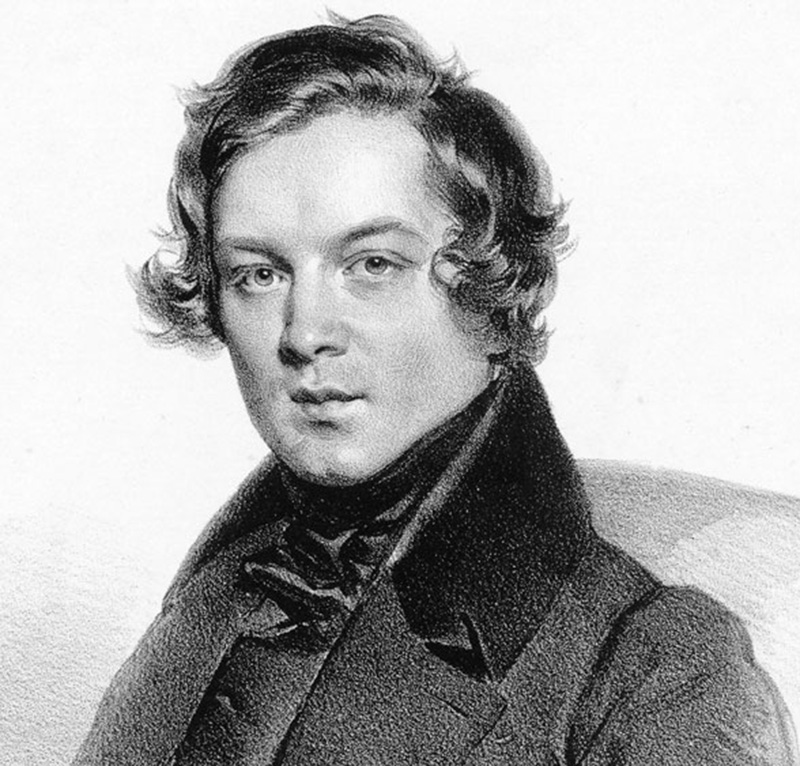Robert Schumann

- Born: June 8, 1810, Zwickau, Germany
- Died: July 29, 1856, Endenich (near Bonn), Germany
Piano Quartet in E-flat Major, Op. 47
- Composed: October 25 and November 26, 1842
- Premiere: April 5, 1843 at a private performance in the Schumanns’ Inselstrasse home in Leipzig. The first public performance was December 8, 1844 at Leipzig Gewandhaus with Clara Schumann, piano; Ferdinand David, violin; Niels W. Gade, viola; and Franz Karl Wittmann, cello. Published in May 1845 and dedicated to Count Matyev Yuryevich Weilhorsky
- Duration: approx. 29 minutes
Robert Schumann was a playwright and poet as well as a composer. He also was a pianist, and all of his compositions, until 1840 when he married Clara Wieck, were for solo piano. That year, he was inspired to compose most of his lieder (“art songs”). The year 1841 was devoted to writing symphonic literature and 1842 to chamber music. Early in 1842, Schumann studied at length the string quartets of Haydn, Mozart and Beethoven, and when Clara returned from a concert tour (she was a skilled pianist and more celebrated than he at that time), Robert put into practice the knowledge he had gathered from the masters. He composed his three string quartets, the piano quintet, a piano trio that later became the Fantasiestücke, and the piano quartet all during that year.
The first movement of the Piano Quartet begins with a brief sostenuto, reminiscent of Beethoven, which introduces the thematic material of the following allegro. Except for another appearance of the sostenuto, there are almost constant eighth notes propelling this energetic movement to a close. In the second movement, instead of a traditional slow movement, Schumann gives us a scherzo, again with almost constant eighth notes except for the two trios (the second tries to trick the listener—what actually is the third beat of each bar sounds like the downbeat). The third movement andante sounds like one of Schumann’s lieder, with all three string voices singing the beautiful tune. Sadly, this theme is never shared with the piano. This andante also has a Beethovenesque middle section. The finale begins with a driving fugue, followed by a flowing, yet impatient, second theme. A short, lyrical section gives a moment of repose, but the fugue subject is insistent and finally takes over as this piece races to a conclusion.
—Daniel Culnan